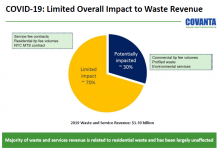Jim Lane
A Biofuels and Biobased investment primer: An 18-combination, 8-character system for classifying bio investments
Here’s our investment primer on how to size up the risks and the rewards and tune them to meet your goals.
And, a system for organizing opportunities.
So, you’re thinking about investing in bio? Here’s the good news – you’re not alone. Here’s the bad news – you’re not alone.
There are retail, private equity, hedge fund, sovereign wealth, strategic, grower, VC and institutional investors snooping around too, and making active investments.
For one thing, carbon’s making a comeback as the economy recovers and the weather continues to get wilder, whackier and scarier. As DOE Deputy Chief of Staff Jeff Navin observed, “Just because the appetite to tackle it went away, didn’t mean the [climate change] problem went away”.
As investors are discovering, the whole world changes when the rain doesn’t fall where it used to fall.
Though there are hundreds of companies, you can parse it all down into some pretty simple categories – in order to measure the rewards (which, generally speaking, you’ll hear a lot about from the promoters) against the risks (er, less chatted up).
That’s what we’re going to cover today with three broad strokes: stage, stream and degree of novelty. There are only 18 combinations. They are the first keys to unlocking opportunities.
3 Streams
There are lots of ways to sector out the biobased space. The most useful way is to divide it, like oil &gas, into upstream, midstream and downstream. The way these work are a little different, and here’s how.
Upstream. In a word, feedstocks – typically crops or residues. Could be anything as mainstream as year’s corn crop, to something as exotic as carbon monoxide and water or municipal solid waste and sludge. A seed company or a grower fits into this category. More exotically, an algae grower does too. Sometimes, a polluter does, if there’s a residue in the mix. If you’re invested in Syngenta, Monsanto or Ceres, you are right here.
Midstream. These are the processing technologies. Could be standard fermentation that has been used for centuries to make alcohols from grain – could be exotic technologies that make bio-oils and char. They could be owner-operators of projects, or technology licensors. If you are invested in Solazyme, Gevo, Renewable Energy Group or Amyris, you fit right here.
Downstream. These are the molecules themselves – their distribution into the marketplace.
2 degrees of novelty
There’s known, and there’s novel. For example, gasoline is known, ethanol is novel (though less so).
Known molecules cause no infrastructure change or change in other processes. Making renewable diesel or jet fuel is an example.
Novel molecules can be substitutes with new uses, such as using biofene as a lubricant or known molecules that have never been feasible before (e.g. using adipic acid as an intermediate pre-cursor for nylon 6,6 – which wasn’t economically feasible before).
Known molecules have equivalent performance. Novel molecules can be varied – they can perform better, or worse.
3 investment stages
There’s early stage, mid-stage and late-stage. Now, everyone has a different definition – for instance, late-stage can mean “pre-IPO” for VC investors. SO, here’s how we look at it.
Early stage. The proof of concept phase. Not just proving that, for example, you can train an given organism to secrete a hydrocarbon. It means from the first moment of the idea until the point where, at any scale, the process is shown to work and is feasible.
This assumes that results hold up during scale-up, the molecule performs as expected in an engine or in green chemistry, input and product prices hold, and that the process bolts into the rest of the field-to-wheels supply chain as expected).
Proof-stage. The point from proof of concept to proof of process.
Late-stage. Process is proven, economics are known. From here, it is a a matter of lining up location, customers and capital in an optimal way. For example, Shell’s Gas-to-Liquids project in Doha, Qatar.
OK, so you’re done. There are 18 different combinations – ranging from “Early-stage, novel, upstream” (e.g. a jatropha seed developer) to a “late-stage, known, downstream” (e.g. investing in a fuel marketer that is distributing, as an offtaker, renewable diesel from a producer’s sixth commercial plant).
You can use acronyms if you like. You use U, M or D for stream, E, P or L for stage, and K or N for novelty. In the examples cited above, you have ENU, and LND. There are just 18 combinations.
Assessing risk and opportunity
From that point, you can start to make some rational investment risk assessments. It’s helpful to line up opportunities within categories (like for like), and compare.
For example, early-stage investments tend to be smaller, and riskier – than later-stage. The “will it work?” factor looms large, early-on. Later, you have more certainty and, as a result, less upside. The more you understand technology and market forces, the more you will like the early-stage.
Upstream technologies are more fully exposed to the biobased sector, than midstream and downstream, while the farther you move down the stream the more you are exposed to a market in a given molecule (downstream), or the arbitrage between the molecule price and feedstock price (midstream).
In terms of novelty for sure, novel technologies have transformative economics on price as well as cost – known molecules tend to offer opportunities in terms of cost savings (cheaper production) or market share shifts (as customers adopt, for example, equally-priced molecules with attractive carbon attributes).
By contrast, novel technologies can have superior performance, or can eliminate a step in a chemistry – even if they cost more, they can offer customers amazing opportunities. But the more novel the molecule, feedstock or technology, the more important the IP protection is, and potentially devastating the loss of patent protection is speed to market will matter in terms of producing ROI.
A real-world example
Let’s take a popular area for investment these days adding technology to enable an existing ethanol plant to make biobutanol.
They are currently in proof-stage, making known molecules, and midstream. Call it a MPK.
So, there you have it. The biobased world of thousands of molecules, a hundred feedstocks and several dozen technologies, parsed down into 8 simple letters, and 18 combinations, that you can use to rate opportunities for risk and reward.
In the retail investing world, in debt-side investing, or in pre-IPO equity investing there are companies of all combinations available. Parse away.
Disclosure: None.
Jim Lane is editor and publisher of Biofuels Digest and BioInvest Digest where this article was originally published. Biofuels Digest is the most widely read Biofuels daily read by 14,000+ organizations. Subscribe here.








